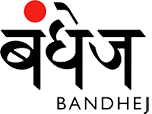
HANDCRAFTED, Sustainable Fashion
Currency

Rejuvenating the production of Rajkot Patolas
In 2018, the Ambani family (Reliance Industries) ordered a few thousand double ikat dupattas to be gifted to the guests at their daughter’s wedding. This gave the double ikat textiles a lot of visibility without the weavers having to spend on advertising their product. Since the Patan weavers were unable to fulfil this huge order, it proved to be an opportunity for a very large number of weavers in the Limdi, Rajkot and Surendranagar districts to master the art of double ikat production and fulfil the orders. It took many months for the dyers and weavers of this region to complete the order, and they were able to earn well as they were paid Rs.35,000 per dupatta.
 |
 |
This, in many ways, broke the monopoly of the Salvi family of Patan. Traditionally, they never even taught their own daughters the art of patola dyeing and weaving to protect their interests. With only two or three families weaving patola sarees, the production of patolas was limited. Taking advantage of their popularity and promoting the patolas as unique and vanishing art form, they started charging exorbitant prices. Once the weavers in Rajkot began weaving similar patola sarees, the Salvi family got a GI certification barring others from using the name ‘patola’, to protect their exclusive control of the market.
 |
 |
| Once the weavers of Rajkot area were able to weave sarees of the same quality as the Patan patolas and the production increased, they were able to rationalise the prices, selling them at a much lower price than the Salvi family. The weavers of Patan felt threatened by this, so they filed a case against the Rajkot weavers for selling the double ikat sarees, claiming proprietorship, protected by their GI certification. To fight this, the Rajkot weavers formed an association and applied for GI certification, with proper documentation stating that their forefathers were taught the art in 1953 and that they had been weaving these sarees for generations. They finally got a GI certification for weft ikat and double ikat sarees in 2016-17. Based on this, they were able to win the case registered by the Salvi family of Patan and are now free to weave and sell both their weft ikat and double ikat sarees, dupattas, stoles and yardage, and use the trade name ‘patola’. |  |
These weft ikat, or the double ikat patola sarees or fabrics cannot be replicated on power looms as the weaving process needs to be manipulated by hand for clarity in the pattern. Warp ikat textiles are now produced on power looms, where the warp is screen-printed before weaving. Although, for years, the Patan weavers had objected to the Rajkot artisans creating patola sarees because they felt that they would lose their market share, today, the market has actually expanded, with all the weavers in Patan and in the surrounding areas having more work than they can handle. There is a growing demand for weft ikat sarees, available in the price range of Rs.12,000 to Rs.30,000. (The price depends on the quality of the silk, intricacy of the design, the number of colours used, and the man-hours spent on production.) The double ikat sarees sell in the range of Rs.80,000 to Rs.3,00,000.
 |
 |
Today, there are over 700 operational handlooms, with a monthly production of around 5000 patola sarees, dupattas and stoles. It was heartening to observe that a number of young weavers want to continue this tradition as the financial returns are attractive and they have found novel ways of marketing their products. They are promoting the worth of the technique on social media platforms, and this has helped create value for their product. Young artisans post pictures of their new products on Facebook or Instagram to get direct orders, which they send by courier after the payment is deposited in their account.










